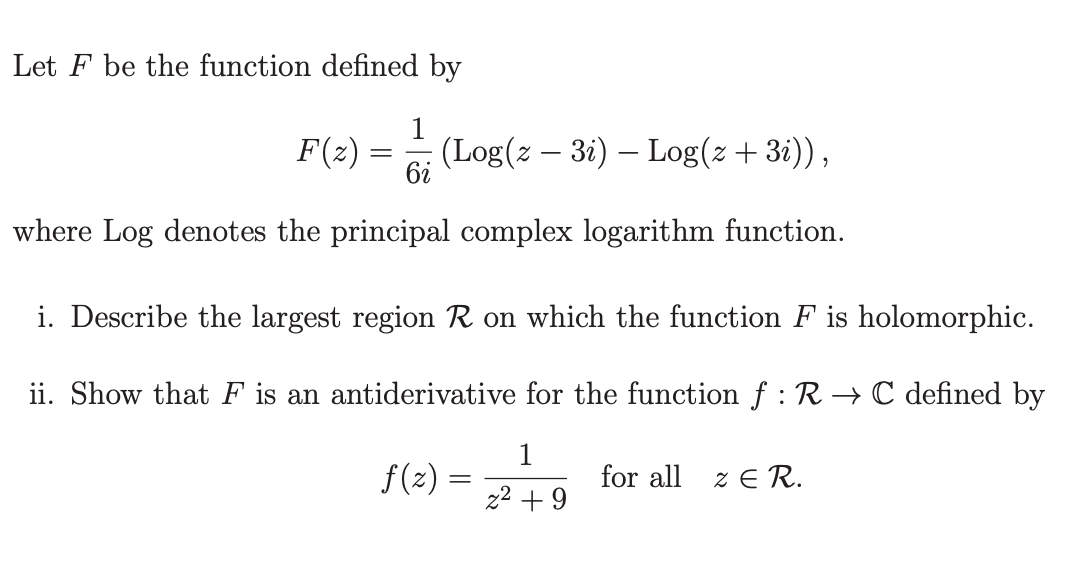Let F be the function defined by F (2) (Log(z − 3i) — Log(z +3i)), 6i where Log denotes the principal complex logarithm function. = i. Describe the largest region R on which the function F is holomorphic. ii. Show that F is an antiderivative for the function f: R→ C defined by
Let F be the function defined by F (2) (Log(z − 3i) — Log(z +3i)), 6i where Log denotes the principal complex logarithm function. = i. Describe the largest region R on which the function F is holomorphic. ii. Show that F is an antiderivative for the function f: R→ C defined by
Algebra & Trigonometry with Analytic Geometry
13th Edition
ISBN:9781133382119
Author:Swokowski
Publisher:Swokowski
Chapter9: Systems Of Equations And Inequalities
Section: Chapter Questions
Problem 12T
Related questions
Question

Transcribed Image Text:Let F be the function defined by
F(z)
=
6i
(Log(z − 3i) — Log(z +3i)),
where Log denotes the principal complex logarithm function.
i. Describe the largest region R on which the function F is holomorphic.
ii. Show that F is an antiderivative for the function f : R→ C defined by
1
z²+9
f(z) =
for all
ZER.
Expert Solution
This question has been solved!
Explore an expertly crafted, step-by-step solution for a thorough understanding of key concepts.
Step by step
Solved in 3 steps with 4 images

Recommended textbooks for you

Algebra & Trigonometry with Analytic Geometry
Algebra
ISBN:
9781133382119
Author:
Swokowski
Publisher:
Cengage

Algebra & Trigonometry with Analytic Geometry
Algebra
ISBN:
9781133382119
Author:
Swokowski
Publisher:
Cengage